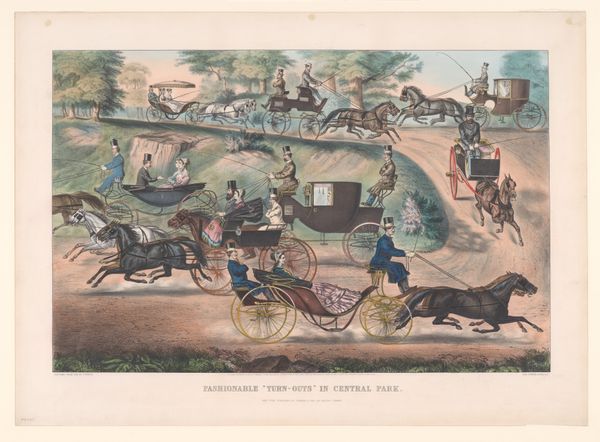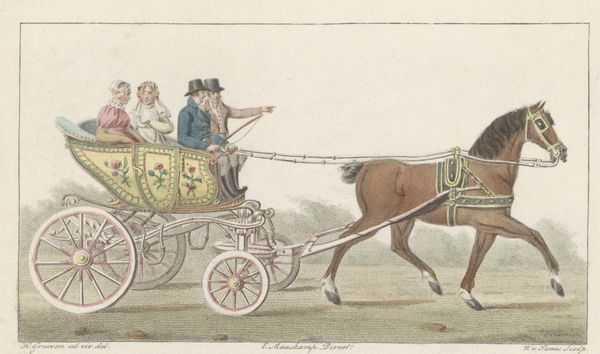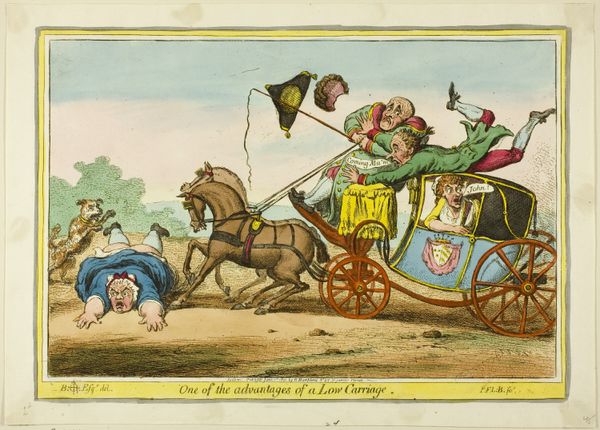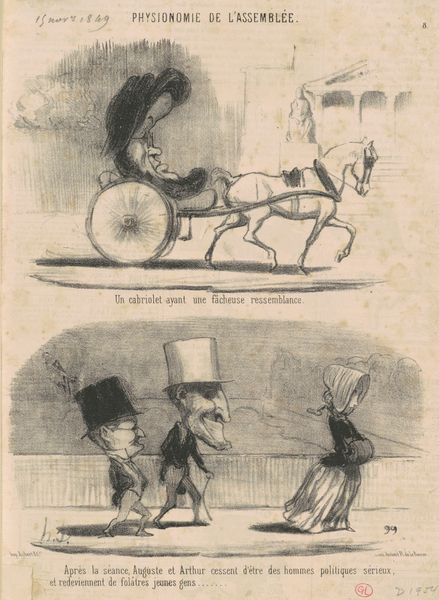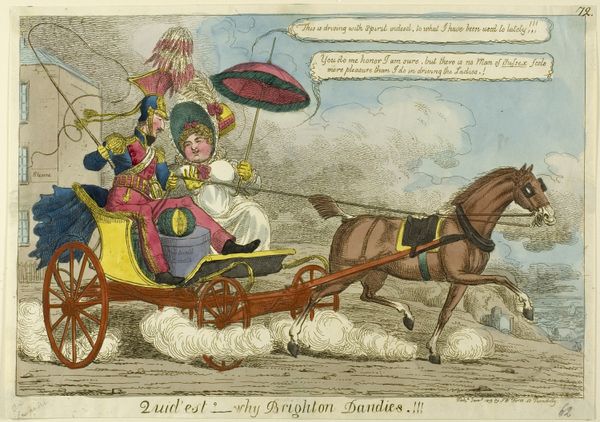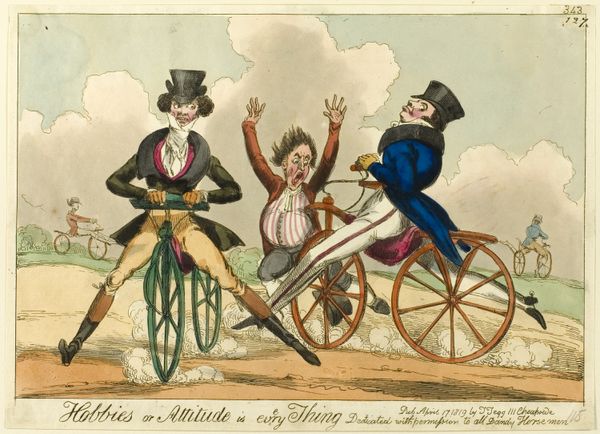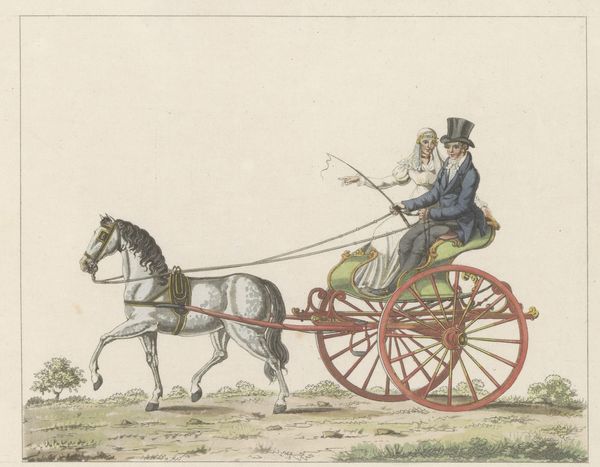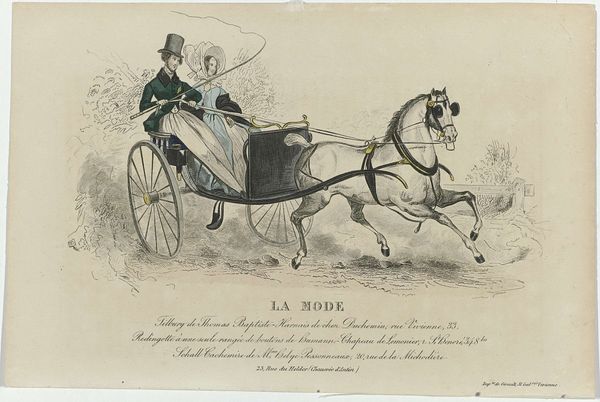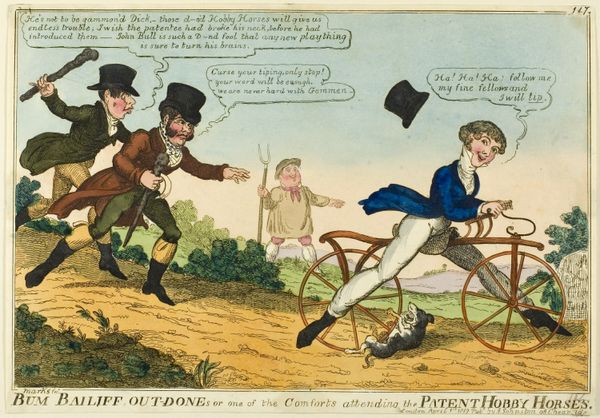
Mose, Lize & Little Mose Going to California 1844 - 1854
0:00
0:00
drawing, coloured-pencil, lithograph, print
#
drawing
#
coloured-pencil
#
narrative-art
#
lithograph
# print
#
caricature
#
coloured pencil
#
romanticism
#
horse
#
men
#
genre-painting
#
mixed media
Dimensions: sheet: 12 5/8 x 16 11/16 in. (32 x 42.4 cm)
Copyright: Public Domain
Curator: This lithograph, dating from between 1844 and 1854, is titled "Mose, Lize & Little Mose Going to California." It's attributed to Henry R. Robinson and the materials include drawing, coloured pencil and print. What strikes you first about it? Editor: Chaos! It's a whirlwind of mismatched elements. The frantic energy, the comical expressions, the sheer absurdity—it's all wonderfully overwhelming. I'm captivated by the symbols in motion here. Curator: The figures, supposedly a family, are caricatures—broad stereotypes reflecting popular attitudes of the time. Look closely at the woman, "Lize". Her demure pose and stylish pink dress and flower might appear sophisticated, but her prominent role as the horse handler reveals her strength in their journey towards an idealized California dream. Editor: And the carrot or vegetable that the horse is trying to catch is suspended with the pulley right in front of him, just out of reach. We can certainly examine this vegetable as an almost universally agreed upon and understood symbol: carrot for reward. Are we examining social class and gender in America? Curator: Exactly. This image functions as narrative art that tells the social tensions around Manifest Destiny and the Gold Rush. We must not disregard how images portray the intersections of identity and social critique, exposing how societal structures perpetuate themselves. It's about aspiration but also about the realities and the inherent inequalities present. Note the caption below it: "By the overland route thus avoiding the Dangerous Chag-raw [Chagres] and depending entirely upon their Jackass". Editor: It's that "Jackass" bit that feels key, doesn't it? I see a family attempting progress by means of a donkey who is being baited towards movement. It really emphasizes that struggle and desperation in the American story and, of course, uses comedy to get its message across, like you suggested. Even the wheel chains have what look like sausages hanging off them. Why, one might ask? Curator: It's a potent reminder that these journeys towards so-called progress were built upon, and continue to perpetuate the subjugation of those outside dominant social positions. The image uses the symbol of westward expansion, normally celebrated and exalted, to uncover uncomfortable truths. It does indeed achieve so many things with only simple coloured pencils. Editor: This makes me pause and question the long road ahead for that family. In that vegetable image, do we even agree on what it represents? Curator: I agree. Art like this really requires unpacking and questioning any assumptions.
Comments
No comments
Be the first to comment and join the conversation on the ultimate creative platform.
